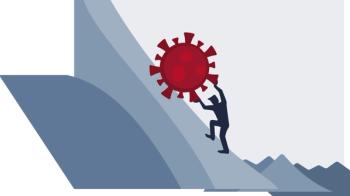Since the quarantine applies to most of us, perhaps my patients no longer feel marginalized compared with others whom they perceive, rightly or wrongly, to hold more dynamic lifestyles.
Has the Playing Field Been Leveled?
Private practice in the COVID era.
COMMENTARY
I am probably not the first psychiatrist to have discovered that a certain percentage of patients are stabilizing rather than deteriorating amidst the COVID-19 outbreak. During a recent online meeting, a colleague noted something similar, resonating with my own clinical experience. This is undoubtedly contrary to everything most of us would have imagined based on media reports. Moreover, we might have anticipated an alternative outcome according to basic therapy logic—people tend to decompensate during crises!
A leading article in the
At this point, allow me to interject that it would be disrespectful to contradict these findings. This is a reputable online survey of 1004 adults versus my own convenience sample. Fears of the virus are real and profound, never to be minimized or dismissed. However, I also believe that it is instructive to expand on what I mean by some patients improving, and whether those among my sub-sample, many with ongoing mood and anxiety disorders, feel that the general public finally gets it. After all, as is frequently sloganized, “We are all in this together.”
Since the quarantine applies to most of us, perhaps my patients no longer feel marginalized compared with others whom they perceive, rightly or wrongly, to hold more dynamic lifestyles. “Stabilizing” as a clinical parameter then becomes less an objective measure of how patients are actually functioning, and more a gauge of their subjective self-acceptance, maybe even inner peace. In that regard, the daily routine playing field is now leveled for everyone.
Case in point are patients who struggle with chronic shyness, not always to the point of diagnosable social phobia, but enough so that it is burdensome to interact with the outside world on a daily basis. One can infer that before COVID-19, this challenge was associated with an unsettling sense of shame, but maybe less so now. The social pressures are off, at least temporarily. I also think of patients with agoraphobia who are chronically housebound. Yet, where are any of us really going right now?
Along these lines, there is no therapeutic directive that the patient gets into their car and takes a drive down the Garden State Parkway, one exit at a time, in order to desensitize a lingering travel phobia. Adding to the democratic spirit of social distancing policies, several experts have commented that the use of telepsychiatry serves as an equalizer, particularly in the context of the doctor-patient relationship. While many of us long ago abandoned what Parth and colleagues2 branded as “the silent, abstinent style of psychoanalysis,” an awkward reminder that the psychiatrist is the supreme authority figure, delivery of care through virtual means humanizes us in the eyes of our patients.
When patients ask me at the conclusion of our telepsychiatry session, “Doctor, how are you and your family doing?” I have to remind myself that this simple question embodies so much. It could mean, for instance, “Now that you and I are on more equal footing, Doctor, both encased with uncertainty, I feel emboldened in expressing my genuine concern for your well-being.” Or, the question might also signal an apprehension that I will become COVID-stricken myself, and thus be ultimately unavailable as their physician. Regardless of exact meaning, what has become abundantly clear in practicing during these most interesting times is an enhanced fluidity in the classic tripartite analytic model of working alliance, real relationship, and transference, concepts we diligently absorbed during residency.2
Acknowledgement: The author would like to acknowledge the following individuals for their assistance in preparing this article: Naomi Weinshenker, MD; Nan Gallagher, Esq; and Yi Zhou, MLIS.
Dr Sofair practices psychiatry in northern New Jersey. She is affiliated with Morristown Medical Center, Atlantic Health System.
References
1. COVID-19 Pandemic Is Taking MH Toll, Finds APA Poll. Psychiatric News. 2020; 55(9):28. Accessed July 15, 2020.
2. Parth K, Datz F, Seidman C, Löffler-Stastka H. Transference and countertransference: A review. Bull Menninger Clin. 2017;81(2):167-211.
3. Yellowlees P. Telepsychiatry: from crisis to opportunity. Carlat Report Psychiatry. May 2020. Accessed July 15, 2020.
4. Mermelstein H. Psychotherapy in the time of COVID. Psychiatric News. 2020;14-15. Accessed July 15, 2020.
Newsletter
Receive trusted psychiatric news, expert analysis, and clinical insights — subscribe today to support your practice and your patients.


















